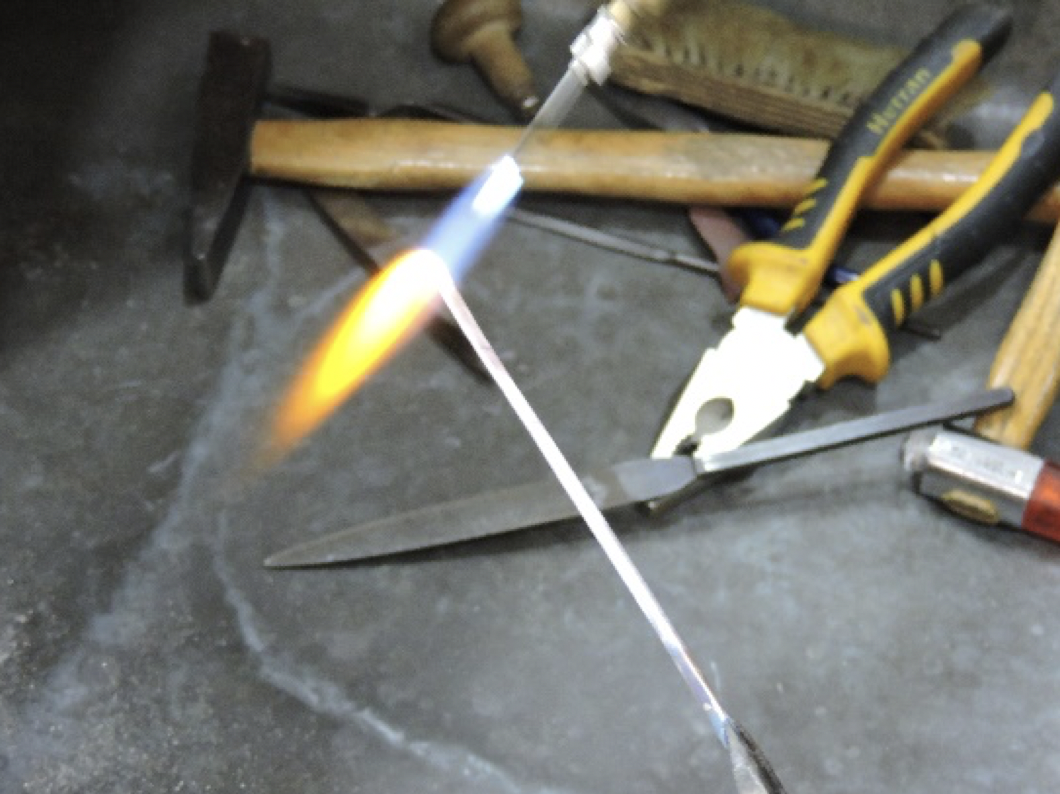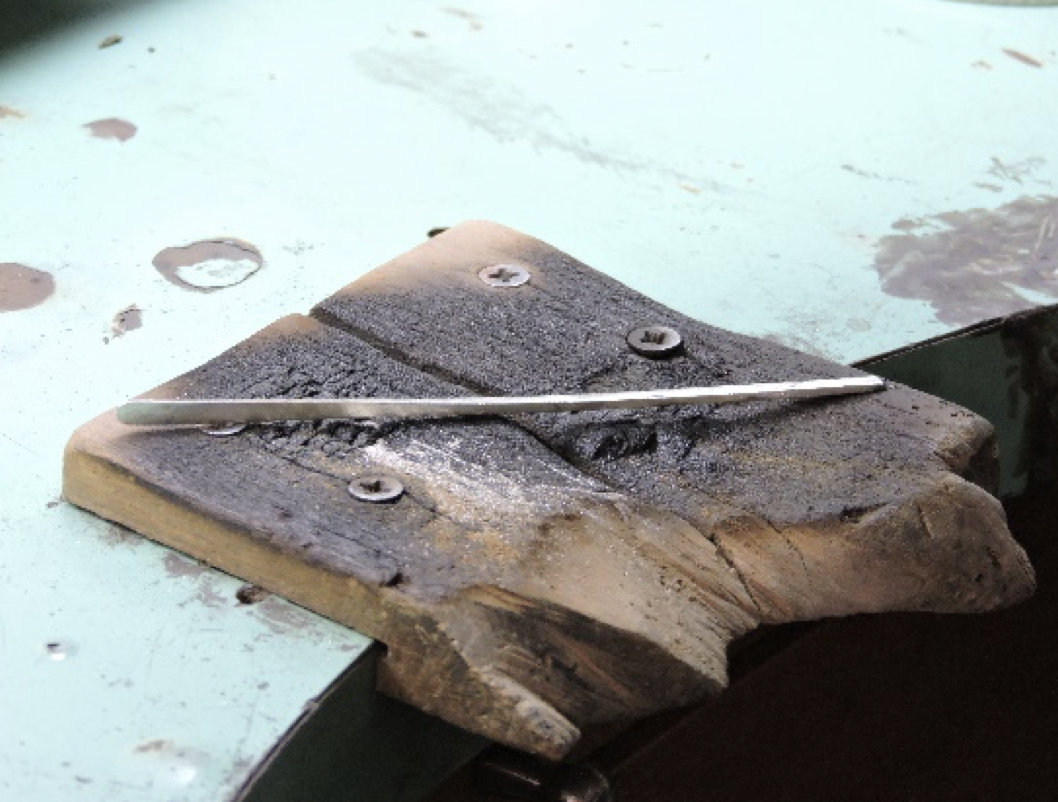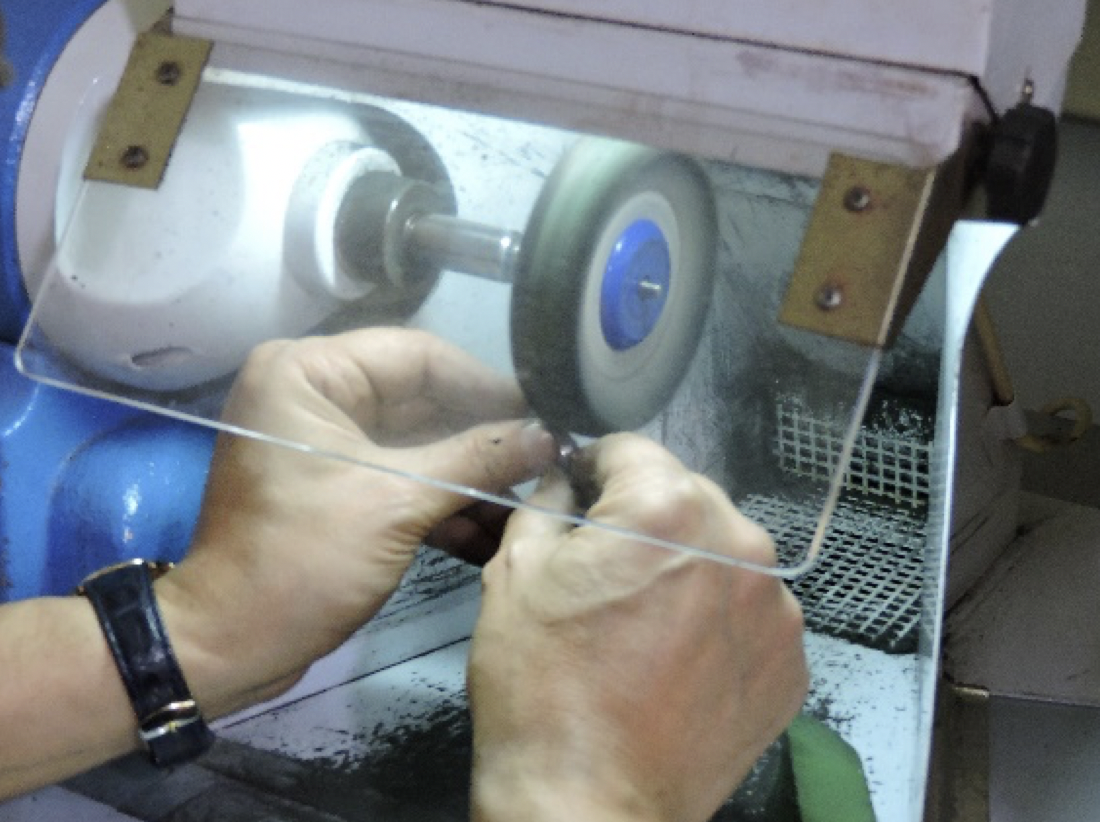How To Make A Silver Ring - Made In Italy Jewellery
Mar 17, 2022 | Simona Oliva
 Metals and how a silver ring is made
The history of humanity has been marked since the earliest times by the search for ways to extract and work metals with which to produce tools, objects, and weapons. In the early stages of human history, the most commonly used material was stone, but stone objects were challenging to work with and not very durable. Thanks to the properties of these materials, the transition to metals enabled humans to make more precise and durable tools that were more efficient. Historians have even used the name of alloys and metals to distinguish certain great epochs of humanity, such as the Copper and Bronze Ages.
Metals and how a silver ring is made
The history of humanity has been marked since the earliest times by the search for ways to extract and work metals with which to produce tools, objects, and weapons. In the early stages of human history, the most commonly used material was stone, but stone objects were challenging to work with and not very durable. Thanks to the properties of these materials, the transition to metals enabled humans to make more precise and durable tools that were more efficient. Historians have even used the name of alloys and metals to distinguish certain great epochs of humanity, such as the Copper and Bronze Ages.
Metals and how a silver ring is made
The history of humanity has been marked since the earliest times by the search for ways to extract and work metals with which to produce tools, objects, and weapons. In the early stages of human history, the most commonly used material was stone, but stone objects were challenging to work with and not very durable. Thanks to the properties of these materials, the transition to metals enabled humans to make more precise and durable tools that were more efficient. Historians have even used the name of alloys and metals to distinguish certain great epochs of humanity, such as the Copper and Bronze Ages.

Fig.1 Mines, from which metals are extracted
But to better understand metalworking processes, it is essential to start from a scientific point of view to understand the types of metals that exist and their processes.
So what are the elements present in nature, and, more specifically, what are metals?
Naturally occurring substances can be distinguished chemically as follows:
- Metals: are a group of substances of natural origin and are solids at ordinary temperature (except mercury, which is the only liquid metal), have a lustrous appearance, are good conductors of heat and electricity, and are easily worked into fine wires and foils. In nature, they are rarely found in a pure state but are almost always mixed with other substances to form minerals from which unique physical and chemical processes can extract them.
- Non-metals: these are substances with characteristics opposite to those of metals.
- Semi-metals: these are substances of natural origin that have characteristics intermediate between those of metals and those of non-metals.
- Alloys: are materials of artificial origin obtained by the fusion of a metal with another metal or with a non-metal.
Once we understand the subdivision of naturally occurring substances, we can go into more detail about metals, which interests us most.
The areas where metals are most concentrated are the deposits from which the metal ore is extracted and subjected to various operations to remove impurities. This treatment is divided into three stages:
1. The material is chemically transformed to obtain a compound that can be quickly processed.
2. The metal is extracted from the ore by electrolysis.
3. Refining, in which it is purified as much as possible
Once the metal has been obtained, it can be used to form alloys.
Subsequently, the alloys must undergo further processing, according to which the alloys are divided into:
- Alloys for hot plastic processing: this is carried out after the material has been brought to a temperature above the crystallization temperature. This temperature depends on the material being used in the alloy, so it varies from case to case.
- cold working alloys: this is carried out at a temperature lower than the recrystallization temperature of the material, which causes the material to harden and its properties to change.
- Casting alloys: this uses the lost wax casting technique. It is used for the construction of almost all types of metal prostheses.
Every metallic material has specific properties that distinguish it from others, which makes it necessary to work differently, for example, some metals need to be processed when hot, while others need to be processed when cold. These properties can be divided into physical, mechanical, and technological. In particular:
- Physical properties: these refer to the physical nature of the metal and are:
- Specific weight. This is the ratio between the mass of a body (measured in kg) and its volume (measured in DMC).
- Thermal expansion. Metallic materials increase their volume when heated.
- Melting temperature. Every metal has its characteristic melting point, i.e., the temperature at which the transition from a solid to a liquid state occurs.
- Thermal conductivity. This is the property of metals to transmit heat.
- Electrical conductivity. This is the property of metals to transmit electrical current.
- Corrosion resistance. This is the property of metals to resist the action of atmospheric agents.
- Mechanical properties: these refer to the ability of materials to resist the action of external forces that tend to deform them and are:
- Compressive strength. Metals resist well the action of forces that tend to crush them.
- Tensile strength. Metals have excellent resistance to the action of forces that tend to stretch them.
- Flexural strength. This is the ability of metals to bend when cold without breaking.
- Fatigue strength. The resistance of metals to repeated stress over time.
- Hardness. This is the resistance of a metal to the penetration of a drill.
- Technological properties: These refer to the ability of materials to undergo various types of processing and are:
- Fusibility. This is the metal's ability to be melted (i.e., to pass from a solid to a liquid state) and cast into molds without leaving voids or imperfections.
- Malleability. This is the ability of metals to be reduced into thin sheets.
- Ductility. This is the ability of metals to be reduced to thin wires.
- Weldability. It is the property of metals to join together in one piece using a weld obtained with molten metal.
- Hardenability. Metallic materials can increase their hardness when heated and quickly cooled.
All these properties, along with others, mean that we can produce and create so many things that we use every day with metals.
Silver is definitely among them. The chemical element in the periodic table has the symbol Ag (from the Latin Argentum) and is found in nature, both pure and in mineral form. Silver is a very ductile and malleable metal, with a white metallic sheen that is accentuated by polishing.

Fig.2 Silver
Silver, as metal and thanks to its properties, can be used in a lot of ways, for example:
- To produce electrical contacts because it is the highest electrical conductivity of all metals.
- To prepare photographic emulsions.
- To produce mirrors with higher reflectance (as ordinary mirrors are made from aluminum)
- For silver coins, the words "silver" and "money" are similar in at least 14 languages.
- To produce jewelry and silverware, where it is the protagonist of an entire branch, silverware includes cups, cookware, trays, frames, and tableware.
- In the production of batteries
- Silver fulminate is explosive.
- Silver is also a food additive, used as a coloring agent particularly in sugar-coated sweets and candies, to obtain a metallic color.
However, one of its most common uses is undoubtedly in jewelry as a precious metal, therefore, to produce silverware, rings, necklaces, bracelets, etc.
As far as this field is concerned, each object has particular processing. There are various types depending on the purpose:
- Turning - one starts with a wooden or steel model of the object to be made fixed on a lathe and with a special tool the operator adheres the metal foil perfectly, thus giving it the desired shape;
- Stamping - Using steel moulds, the desired shape is given to the silver foil, then finished by hand. This is mainly used to produce cutlery and, to a lesser extent, certain types of tableware;
- Chiseling takes its name from one of the tools used since ancient times, which is used to carve a sheet of metal on which a drawing has previously been made with the aid of a hammer. To prevent the metal from collapsing under the blows of the chisel, the pitch is used to fill the object. This technique is usually used to finish the embossing work;
- Embossing - This technique consists of beating the reverse side of the object with a hammer until the desired decoration is obtained in relief.
- Hammering - This technique is used to decorate the outer surface of an object. It is a manual operation that uses specific hammers to beat sometimes, and it is carried out with special machines to obtain the characteristic "orange peel."
- Engraving - One of the oldest decorative techniques involves engraving with a metal tip, the surface of the object on which the ornamental motif has been previously drawn with the consequent metal removal.
To understand better, let's take an example. The goldsmith Vincenzo Malafronte showed how to create a silver ring from various broken pieces of silver.
The main steps to create it are:

Fig.3 Pieces of silver
- Smelting - in which silver is heated to its melting point over a flame

Fig.4 Molten silver
- Cooling

Fig.5 Silver
- Rolling - the piece of silver is passed through a machine until it is the right size and forms a wire.

Fig.6 Rolling machine
- Heating - significant between steps is heating the piece of silver, as this step stabilizes the atoms that make up the metal in their position.

Fig.7 Burner
- Cooling – every time the piece of silver is heated up
- Hammering - to start shaping and creating the desired object

Fig.8 Hammering
- Cut the wire

Fig.9 Cooling
- Grinding is a form of abrasion used to achieve a smooth finish on flat surfaces. It is also an exact technique, as it can be used to produce engravings a few micrometers deep on metal surfaces.

- Form - to give the object the form of all components

Fig.10 Shaping the object
- Cut off the excess part with a hacksaw, which will then be reused for decoration. In this case, it will be a letter R
- Soldering - almost the entire body of the jewel must be heated. This makes each step delicate, as even one too many moments under the flame can melt or damage the final product.

Fig.11 Soldering
- Engraving – for example, the jewelry Le cose belle engraves the decoration, but also its logo
- Polishing - large companies use a chemical process called silvering. With these chemical steps, a thick and resistant layer is deposited on the jewel's surface and leaves it shiny for a long time. However, this process prevents the product from being polished later because the layer, if polished with brushes, will tend to scratch and thus lose its shine. Those who do not have this technology can nibble silver to give it the same color as white gold and ensure that the jewel retains its luster for longer.

Fig.12 Cleaning
- The ring is finished.

Fig.13 Finished ring
As we have seen, the ring was created from pieces of silver derived from broken and unusable or no longer used objects, and, like this ring, any object can be created from recycled metals. This reuse of materials is possible because silver is a material that can be melted down and, consequently, reused to create new objects. Metals like gold and silver are materials that can be recycled indefinitely without losing quality, and they will never oxidize or spoil. Today, more and more companies are moving towards sustainability and recycling of raw materials. The complete utilization of unmined gold and silver reduces carbon dioxide emissions water consumption. It will also reduce other environmental impacts, as recycling precious metals uses fewer resources than extracting new metals. For example, according to Life Cycle Assessment (LCA), which is an analytical and systematic methodology that assesses the environmental footprint of a product or service throughout its life cycle, carbon dioxide emissions generated by sourcing recycled silver are a third of those generated by mining silver while recycling gold is equivalent to 600 times fewer carbon dioxide emissions than mining gold.
In conclusion, we hope that this blog has been helpful to understand better what metals are and the main characteristics that make them easy to work into many of the objects we use every day, and how silver is worked into a beautiful ring.
We hope you enjoyed this blog! In the meantime, why not read this blog on Campanian pottery and ceramics of Italy!
Recommended








